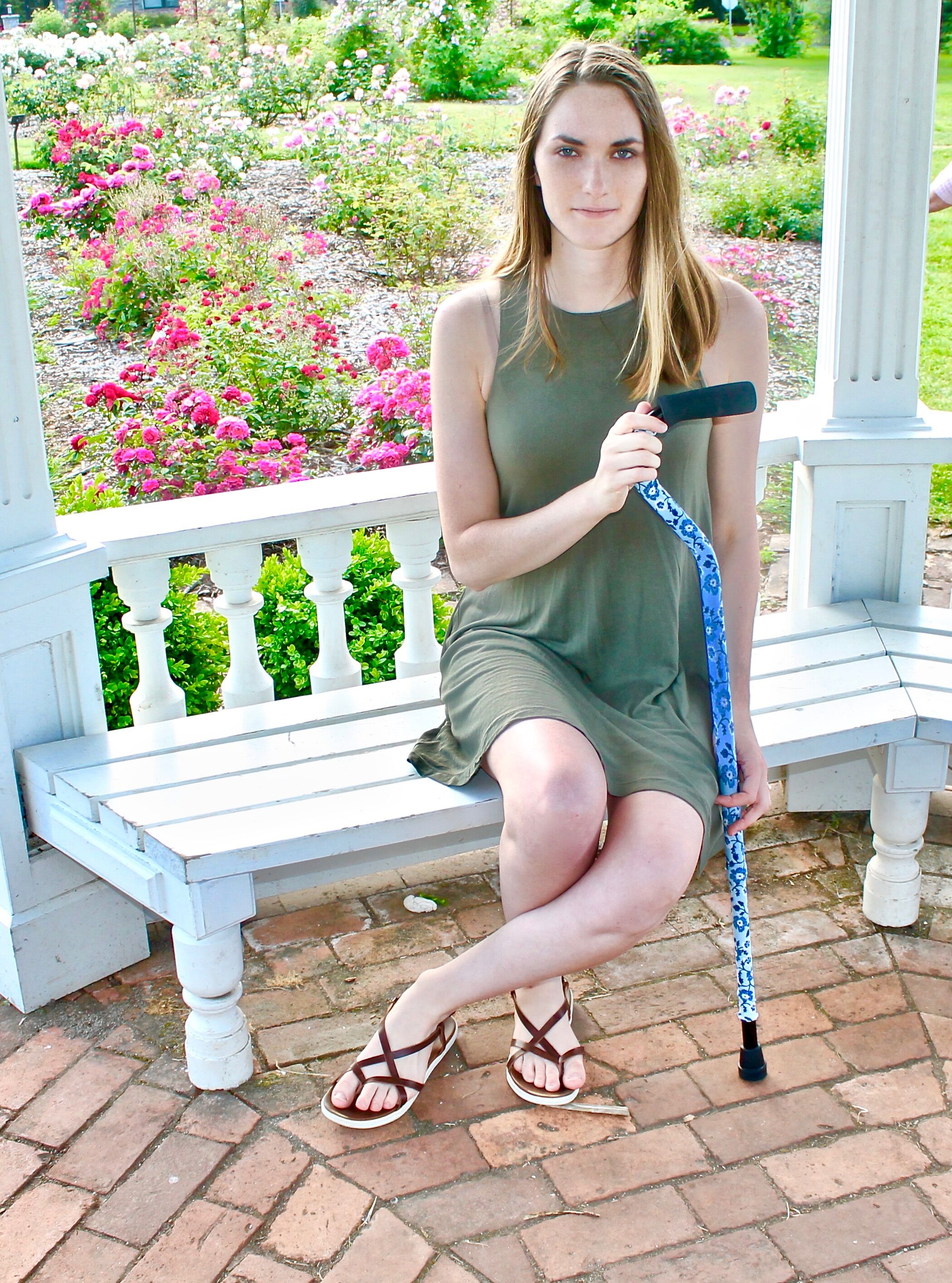When I was 12 years old I had a swimming injury that changed the rest of my life. Up until that point I was able-bodied and active. But after that injury I developed a chronic pain condition that caused my legs to be in constant pain. When I had pain flares, I walked with mobility devices such as a cane or crutches.
As a sixth grader, the transition to often being heavily dependent on my mobility devices was a hard one. I quickly learned that people often treat you very differently when you are using a mobility device. Because of the jokes and comments I got, I became self-conscious about my mobility devices. I only used them on an as-needed basis, so when I had to pull my crutches out of the closet because of a pain flare up, I felt dread. I feared how people would react to me. I saw my mobility devices as a sign of defeat and shame.
As I got older, I continued to struggle with how my crutches and cane made people perceive me. I often pushed myself to the breaking point just so I did not have to use my crutches. Because of this, I had numerous friend groups that had no idea I was battling with an invisible illness. I felt alone in my battle, and yet I resisted opening up because of how I thought people would see me.
Last year I transferred colleges and started to pursue my dream of becoming an apparel designer. Studying the apparel industry more in-depth caused me to realize one of the roots of my insecurity with my mobility devices. I noticed the fashion industry, and media as a whole, rarely showed people using mobility devices. With the almost exclusive display of able-bodied individuals in the media it was no surprise that I felt like my mobility devices were a sign of inferiority. I wanted to be “normal,” and from what I saw around me, having a disability was not normal.
My realization caused me to start looking into why media heavily underrepresents people who use mobility devices. Instead of finding the answer to this question, I found something much better. I discovered that brands have started recognizing the uniqueness mobility devices and other disabilities add to someone’s identity. I also found there are hundreds of influencers on various platforms that confidently display their mobility devices as a badge of honor. I decided I wanted that kind of confidence.
Armed with my new appreciation for my mobility devices, I realized another reason why I was embarrassed to use them. All my mobility devices were boring shades of either gray or black. Embracing the fashion student inside me, I sewed myself crutch sleeves from fabric to wrap around my crutches and cane to make them more aesthetically pleasing. That was the pivotal moment for me. I began to see my crutches as accessories instead of a much-dreaded necessity. Wearing my handmade crutch accessories gave me confidence, and changed how people saw my mobility devices.
I realized I wanted to share this kind of confidence with others. To give others the opportunity to accessorize their crutches, I started my brand Crutch’n It to sell cane and crutch covers online. I did this not to make money but to share the message that mobility devices are not something to be hidden or ashamed of. Seeing other people be confident using their mobility devices caused me to be confident as well, and I wanted to share this with people. Ultimately, I chose to see my use of mobility devices not as a curse, but as a way to give the gift of self-confidence to others who are just like me.
I chose to not let my mobility devices define me, but to let myself define how I want to use them to do good.


